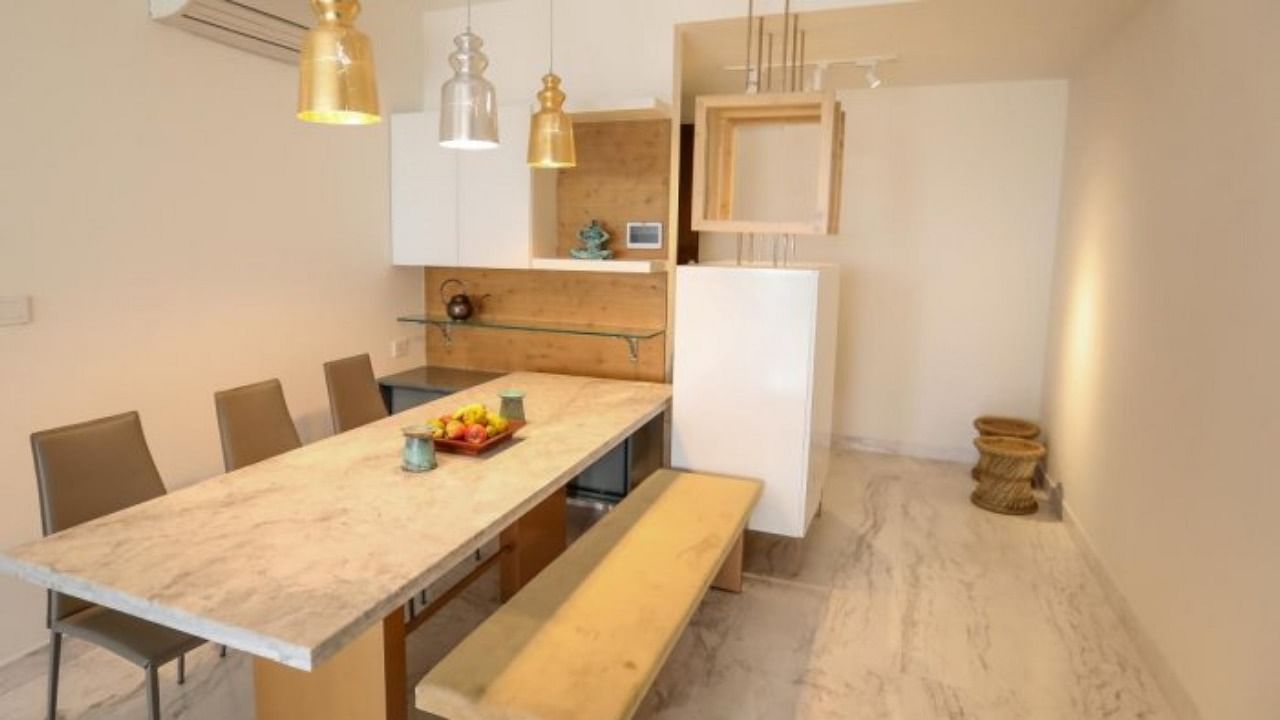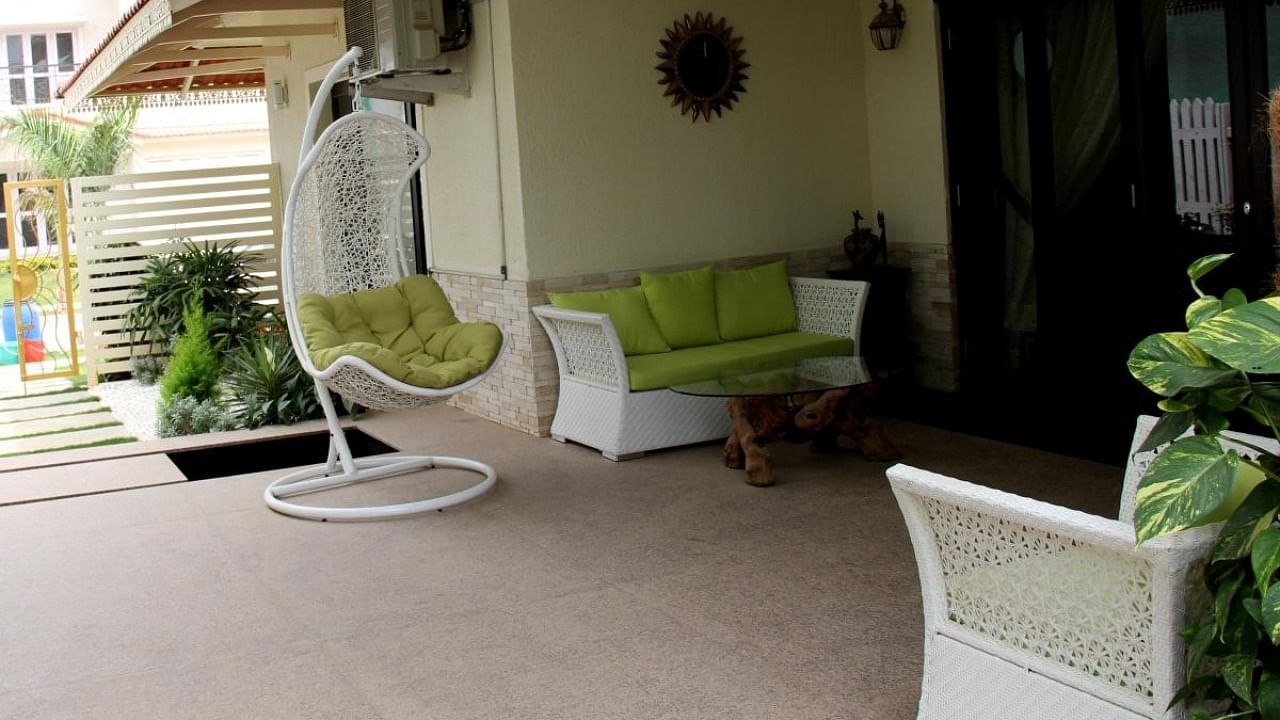

Gone are the days when only the Italian marble would qualify as stylish for our homes. Today, interior designers in India are switching to local stones like Indian white and Baroda green marble, Kota stone, granite, and sandstone.
But why, you ask? Because they are locally-available, and hence, sustainable, they suit our climate and aesthetics, and they can reduce costs.
Let’s start with the basics: Floor. When I built my home in Bengaluru 20 years ago, I insisted on having a stone floor. My grandparents’ home in Gadag has a Cuddapah floor that has acquired a sheen and smoothness over time. Stone is old-school — a good, hardy, natural material that stands the test of time, and could even improve with age.
I went hunting for Indian marble for my home and fell in love with a dark green marble with dramatic white veins. It was perfect for the open plan of the lower level containing the living, dining, family rooms, and the kitchen. Large windows there ensured plenty of light so the dark green floor turned into a gleaming reflective mirror.
For the bedrooms, I found an Indian white marble and played around with the two to create interesting inlay patterns. Cut to the present, and it’s impossible to find good Indian marble flooring options. On the other hand, everywhere you go, there’s no dearth of Italian marble. So, what happened? A case of video killed the radio star perhaps?
There’s far more to Indian stone than marble — Kota, granite, sandstone and a variety of slates galore. These stones are not only suited to our regional tropical climate and aesthetics but also easily available as they are sourced locally. The use of these resources leads to a reduction in overall project timelines and project costs.
Versatility quotient
Stone as a flooring material can be used across the home, from verandas, foyers, and living and dining areas, to kitchens, bedrooms and even toilets. The biggest advantage is that, unlike tiles, stone can be laid without joints so that the floor looks seamless and expansive.
Always keep in mind the quality and quantity of light in any given space to decide the flooring colours.
It’s best to avoid dark colours for small spaces and rooms on the ground floor as the amount of light increases as one climbs to the floor above.
Varied textures
Remember that the lighter the marble the hardier it is. However, the darker the granite, the tougher it is. Hence, black granite is the universal favourite for the ubiquitous Indian kitchen counter.
For the kitchen floor, light-coloured marble should be avoided as it has zero tolerance to turmeric whereas light-coloured granite tends to be porous and absorbs oil, water and stains. When polished, marble can be slippery, so use it with care in toilets and wet areas.
Granite can be given a leather finish to enhance its rustic look and make it anti-skid. This makes it a popular choice for courtyards, driveways, and outdoor garden gazebos.
White marble is cool to the eye as well as touch and can be used for hot tropical climates. The Indian green or Baroda green marble has a certain drama that can set the tone for a living room or bedroom; the definitive veining when book-matched creates spectacular patterns on the floor.
Kota stone has also regained favour. Its dusty grey-green colour is a perfect foil to teak wood furniture matched with bright upholstery. The only limitation is that the maximum size available readily is 2’x2’ or 4’x2’. For larger slab sizes, one has to place orders from Rajasthan and that can take around 6-8 weeks.
Kota is also available in brown and yellow and comes calibrated in mirror, sandblasted, or leather finishes. It provides a neutral backdrop. Adding some metallic accents in the form of brass or copper accessories can create visual contrasts. The yellow Jaisalmer stone lends an earthy and warm tone to the interiors. This is usually paired with brick masonry for a tropical contemporary result.
The bold black look of Cuddapah, on the other hand, can be played up by juxtaposing it with soft luxe furnishings.
Switch, why?
The Covid-19 pandemic has served as a wake-up call for interior designers who used imported materials, causing further delay to project timelines.
It’s time to incorporate naturally available local stones into our designs to create a demand for these anew. Using local stone for your home is not only a step towards a sustainable, sensitive, and climate-responsive design but also connects you to your roots.
Local stones
Baroda green marble
Kota
Granite
Sandstone
Challenges
Light-coloured marble has zero tolerance to turmeric and similar stains.
Marble is slippery
Light-coloured granite tends to be porous and absorbs stains.
Wallet factor
The price of Indian marble and granite starts at Rs 150 per sq ft while the Italian marble starts at Rs 300 per sq ft.
(The author is an architect and chairperson of the Institute of Indian Interior Designers Bengaluru)